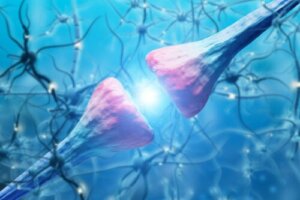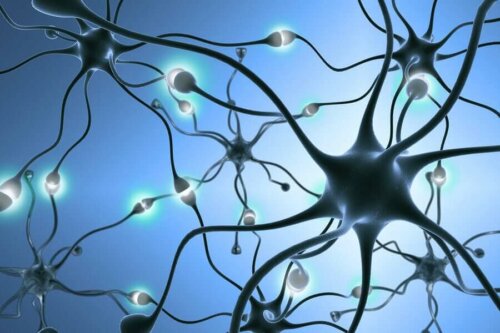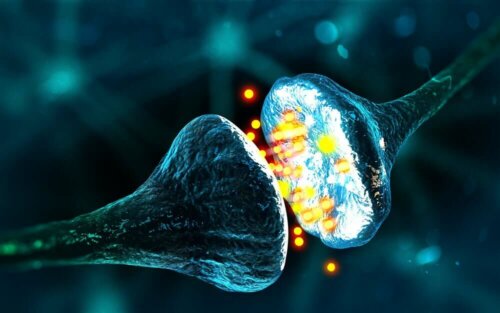Characteristics and Function of Neurons


Written and verified by the doctor Leonardo Biolatto
Looking at the function of neurons, and how they work, reveals that these cells are a sophisticated piece of natural “engineering.” You may not be aware of it but neurons are the basic unit of the nervous system and they allow the body to control and coordinate all of its activity.
The way neurons function makes it possible to transmit information to the body, both external and internal, by means of a complex mechanism of chemical and electrical signals. Also, the impulses can transmit at a speed of 224 miles per hour through certain nerve fibers.
Thanks to the way neurons work, we can withdraw our hands when we touch a burning hot surface, feel when something is soft, experience pain, know if something is cold, and so on. These cells are like messengers within our nervous system.
Characteristics and function of neurons
Neurons are a type of cell and are part of the nervous system. Their basic function is to receive and transmit information through electrical impulses. Neurons create extensive communication networks throughout the nervous system.
These cells have a star-like shape and a central body that contains the structure that keeps them alive. They also have several branches, within which there are many short and tuft-like dendrites. In addition, they have a pretty long branch, called the axon.
People previously believed the organism wasn’t capable of producing new neurons in the brain, throughout life. However, a team of scientists from the medical Karolinska Institutet in Sweden conducted an experiment and determined this isn’t the case. The brain can produce up to 1,400 neurons per day, thanks to a process known as “neurogenesis.”

Neuronal structure
As mentioned above, neurons are made up of three elements. Let’s look at each one of them:
- The body, or soma, contains all the elements a neuron needs to be viable
- The dendrites are extensions that receive the nerve impulses sent by other neurons, through the synapses
- Finally, the axon or neurite is a thin, long extension and its role is to transmit nerve impulses to other cells
Check out these Five Simple Habits to Help Regenerate Neurons
All neurons basically have this structure but are sometimes different from each other according to the functions they perform. Thus, there are three types of neurons:
- Firstly, the unipolar neurons have a single branch that acts as a double pathway that acts both as a dendrite and an axon. They’re characteristic of sensory neurons.
- Then, there are the bipolar ones. These have two branches. One of them acts as a dendrite and the other as the axon. These are characteristic of the neurons in some parts of the eyes, ears, and nose.
- Thirdly, the multipolar are the most numerous type of neurons and have the classic structure of several dendrites in the form of a tuft, in the reception zone, and a long axon in the output zone. They’re usually in the spinal cord and the brain.
How do neurons function?
The structure of these cells determines how neurons function. Simply put, the neuron receives an electrical impulse through the dendrites. Then, it passes through the body, or soma, and then goes to other cells via the axon.
The axon releases a chemical substance called a neurotransmitter. This, in turn, reaches the dendrites of the next neuron and triggers the electrical signal that starts a new cycle like the previous one. In fact, each neuron can make thousands of connections.
Learn about Von Economo Neurons, the Cells for Socializing
There are several types of neurotransmitters that facilitate the various neuron functions:
- Serotonergic secrete serotonin (mood)
- Dopaminergic secrete dopamine (pleasure)
- GABAergic secretes GABA (inhibitory neurotransmitter)
- Glutamatergic secrete glutamate (memory and recalling)
- Cholinergic secrete acetylcholine (multifaceted)
- Noradrenergic secrete noradrenaline/norepinephrine (increased heart rate and blood pressure)
- Vasopressinergic secrete vasopressin (a homeostatic regulator)
- Oxytocinergic secrete oxytocin (affection)

Other facts about the functioning of neurons
As you can see, neurons are small messengers in the organism, since their main function is to receive and transmit information. They receive and deliver it to other neurons as well as to muscles and glands.
Also, neurons have three main functions: sensory, integrative, and motor. The sensory function allows us to perceive internal and external changes, such as heat, light, and so on. Furthermore, the integrative function processes the information received to give an appropriate response. Covering up when we’re cold, for example.
Finally, the motor function causes the muscles and glands to act, or not to act, as required. There are neurons in our central nervous system (brain and spinal cord), but these cells are also in the peripheral nervous system. Their central nucleus is the ganglion located along the spinal chord.
All cited sources were thoroughly reviewed by our team to ensure their quality, reliability, currency, and validity. The bibliography of this article was considered reliable and of academic or scientific accuracy.
- Noguera, J., Portillo, N., & Hernandez, L. (2014). Redes Neuronales, bioinspiraciòn para el desarrollo de la ingenierìa. Ingeniare, (17), 117-131.
- Karolinska Institutet. “Discovery concerning the nervous system overturns a previous theory.” ScienceDaily. ScienceDaily, 12 September 2019. <www.sciencedaily.com/releases/2019/09/190912080011.htm>.
- Lodish H, Berk A, Zipursky SL, et al. Molecular Cell Biology. 4th edition. New York: W. H. Freeman; 2000. Section 21.1, Overview of Neuron Structure and Function. Available from: https://www.ncbi.nlm.nih.gov/books/NBK21535/
- Ludwig PE, Varacallo M. Neuroanatomy, Neurons. [Updated 2018 Nov 14]. In: StatPearls [Internet]. Treasure Island (FL): StatPearls Publishing; 2020 Jan-. Available from: https://www.ncbi.nlm.nih.gov/books/NBK441977/
- Raine CS. Characteristics of the Neuron. In: Siegel GJ, Agranoff BW, Albers RW, et al., editors. Basic Neurochemistry: Molecular, Cellular and Medical Aspects. 6th edition. Philadelphia: Lippincott-Raven; 1999. Available from: https://www.ncbi.nlm.nih.gov/books/NBK28209/
This text is provided for informational purposes only and does not replace consultation with a professional. If in doubt, consult your specialist.








